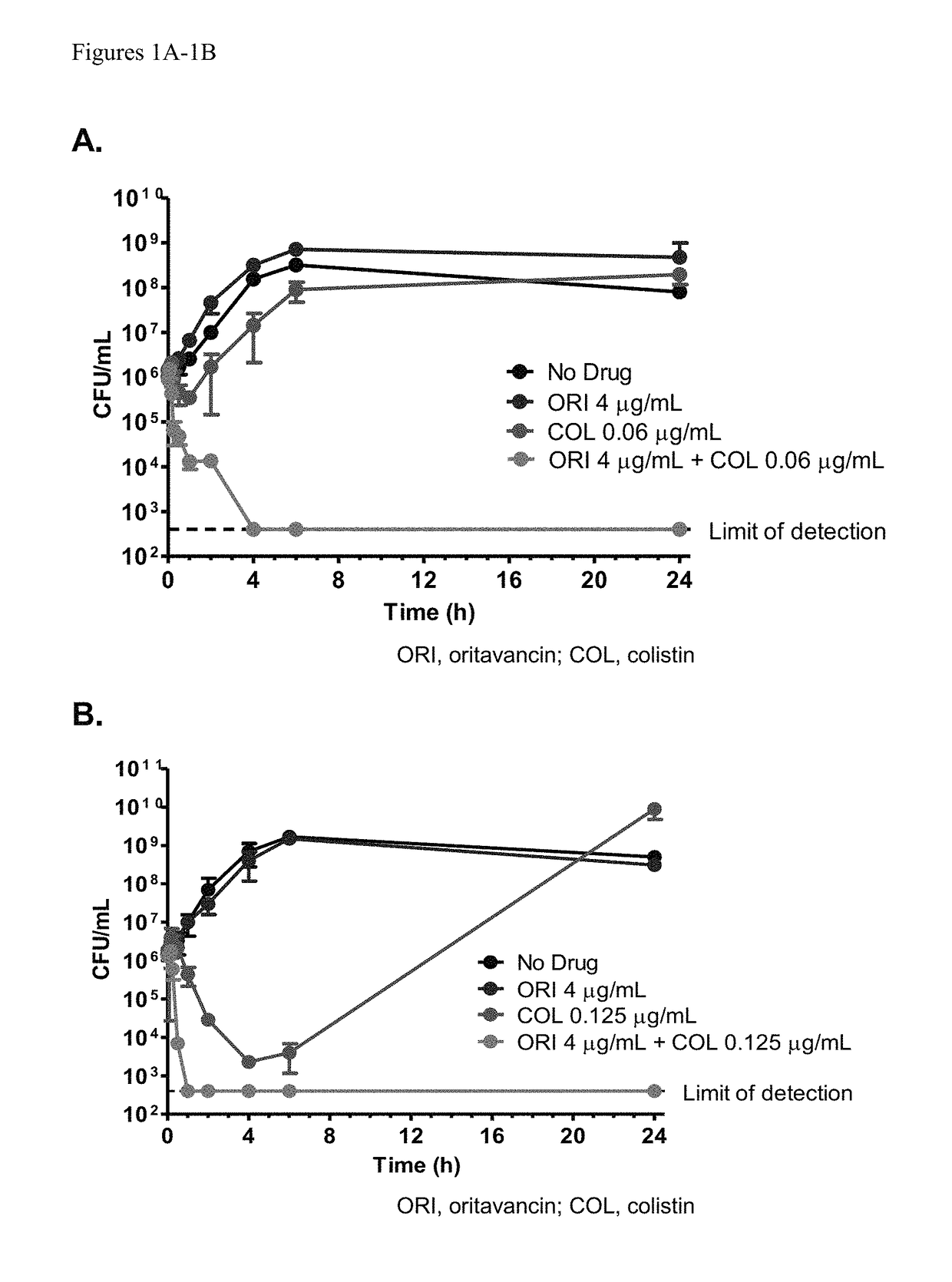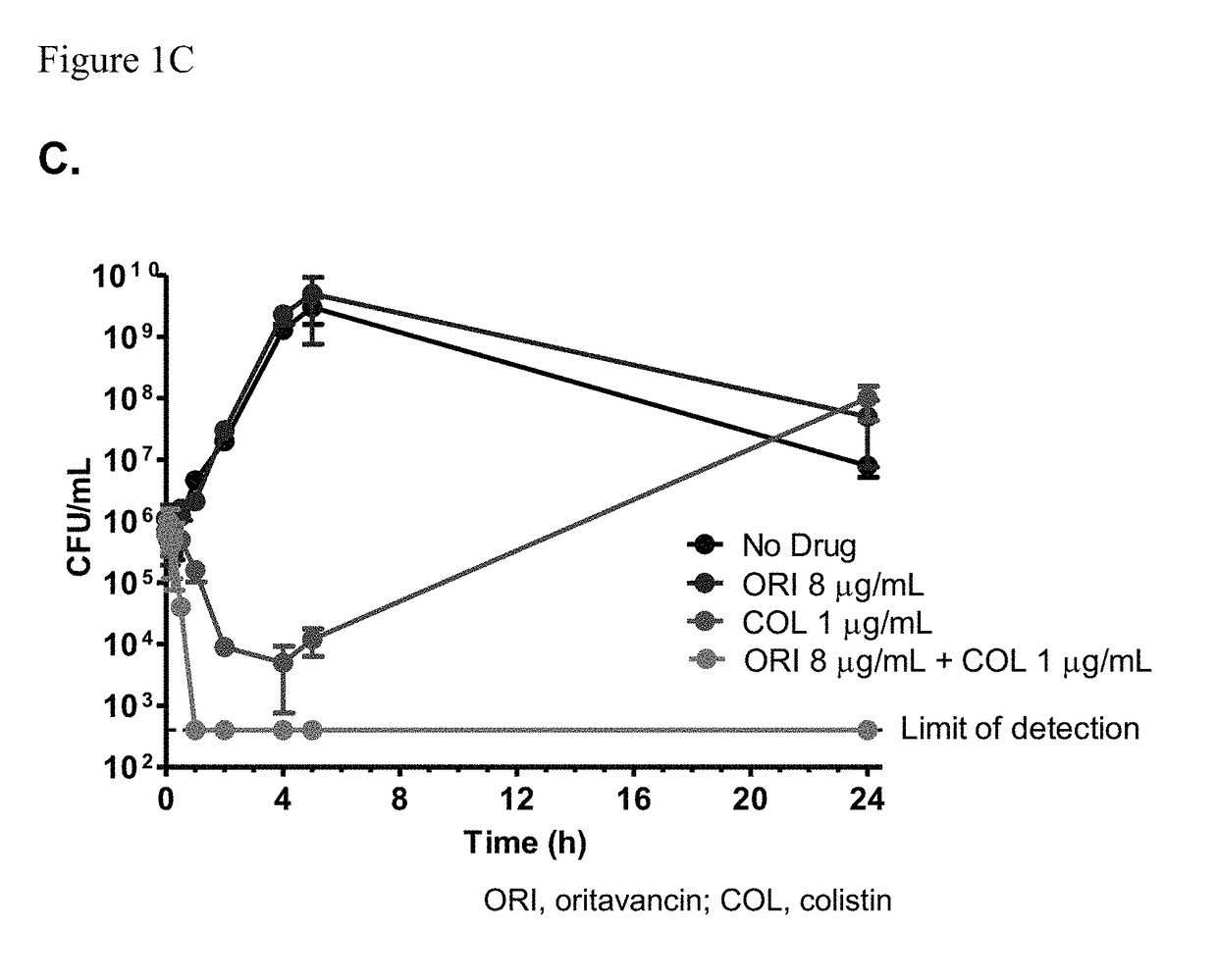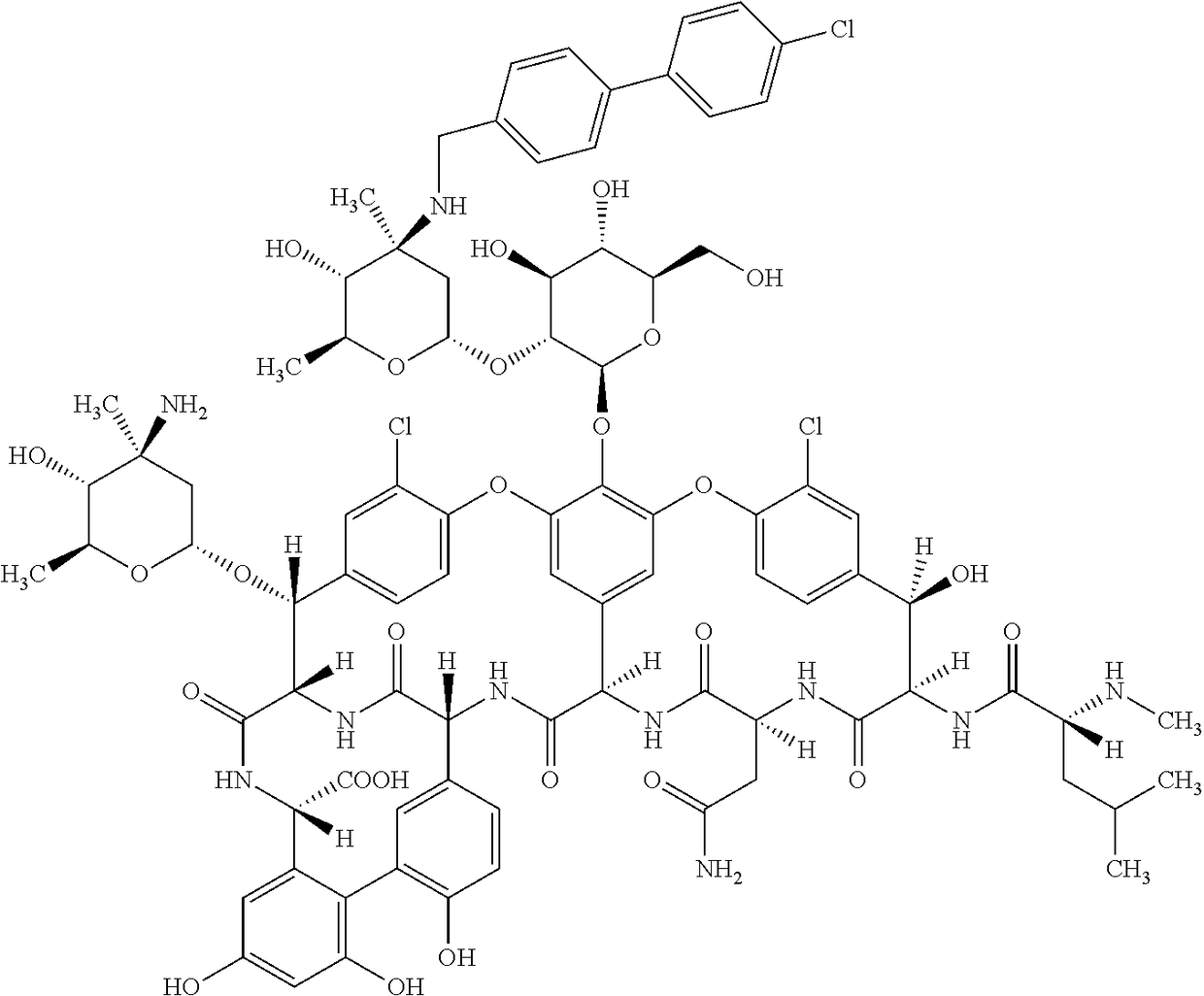Methods for treating bacterial infections using oritavancin and polymyxins
a technology of oritavancin and polymyxin, applied in the field of methods of treating bacterial infections, can solve problems such as cell death
- Summary
- Abstract
- Description
- Claims
- Application Information
AI Technical Summary
Benefits of technology
Problems solved by technology
Method used
Image
Examples
example 1
Activity of Oritavancin Combined with Colistin Against Multi-Drug Resistant Strains of Acinetobacter baumannii
[0069]Background:
[0070]Managing infections caused by multi-drug resistant Acinetobacter baumannii (MDRAB) remains a healthcare challenge because of the few therapeutic options available. Combinations of low doses of colistin (COL) with glycopeptides have been shown to act synergistically against MDRAB in vitro. Here, the activity of oritavancin (ORI), a lipoglycopeptide, is described when combined with COL in checkerboard and time-kill assays.
[0071]Methods:
[0072]Broth microdilution MIC testing (CLSI M07-A9) was performed on the Acinetobacter baumannii (AB) reference strain ATCC 19606 (obtained from ATCC) and 10 AB strains, including 8 MDRAB (resistant to ≧3 of the following: beta-lactams, gentamicin, fluoroquinolones and tetracycline; obtained from Eurofins Medinet Chantilly, Va.). The requirement of 0.002% polysorbate 80 (P-80) for testing oritavancin also necessitated the...
example 2
Activity of Oritavancin Combined with Colistin Against Multi-Drug Resistant Strains of Acinetobacter baumannii
[0078]Infections caused by Acinetobacter baumannii are increasingly becoming problematic because multi-drug resistant strains are being implicated. Polymyxins and tigecycline have been used to treat such infections but resistance and / or toxicity to these agents are being reported. Combination therapy has been advocated as a means of treating these infections, with in vitro data suggesting synergy between COL and several agents (Hornsey et al., Antimicrob Agents Chemother 56:3080-3085, 2012; Vidaillac et al, Antimicrob Agents Chemother 56:4856-4861, 2012; Lee et al., Antimicrob Agents Chemother doi:10.1128 / AAC.00703-13, 2013; Ohara et al., Antimicrob Agents Chemother 57:2103-2108, 2013). Here, the activity of oritavancin, a semi-synthetic lipoglycopeptide, is described when combined with COL in checkerboard and time-kill assays against A. baumannii.
[0079]Strains.
[0080]Acine...
PUM
| Property | Measurement | Unit |
|---|---|---|
| concentrations | aaaaa | aaaaa |
| Resistance | aaaaa | aaaaa |
| lipophilic | aaaaa | aaaaa |
Abstract
Description
Claims
Application Information
 Login to View More
Login to View More - R&D
- Intellectual Property
- Life Sciences
- Materials
- Tech Scout
- Unparalleled Data Quality
- Higher Quality Content
- 60% Fewer Hallucinations
Browse by: Latest US Patents, China's latest patents, Technical Efficacy Thesaurus, Application Domain, Technology Topic, Popular Technical Reports.
© 2025 PatSnap. All rights reserved.Legal|Privacy policy|Modern Slavery Act Transparency Statement|Sitemap|About US| Contact US: help@patsnap.com



